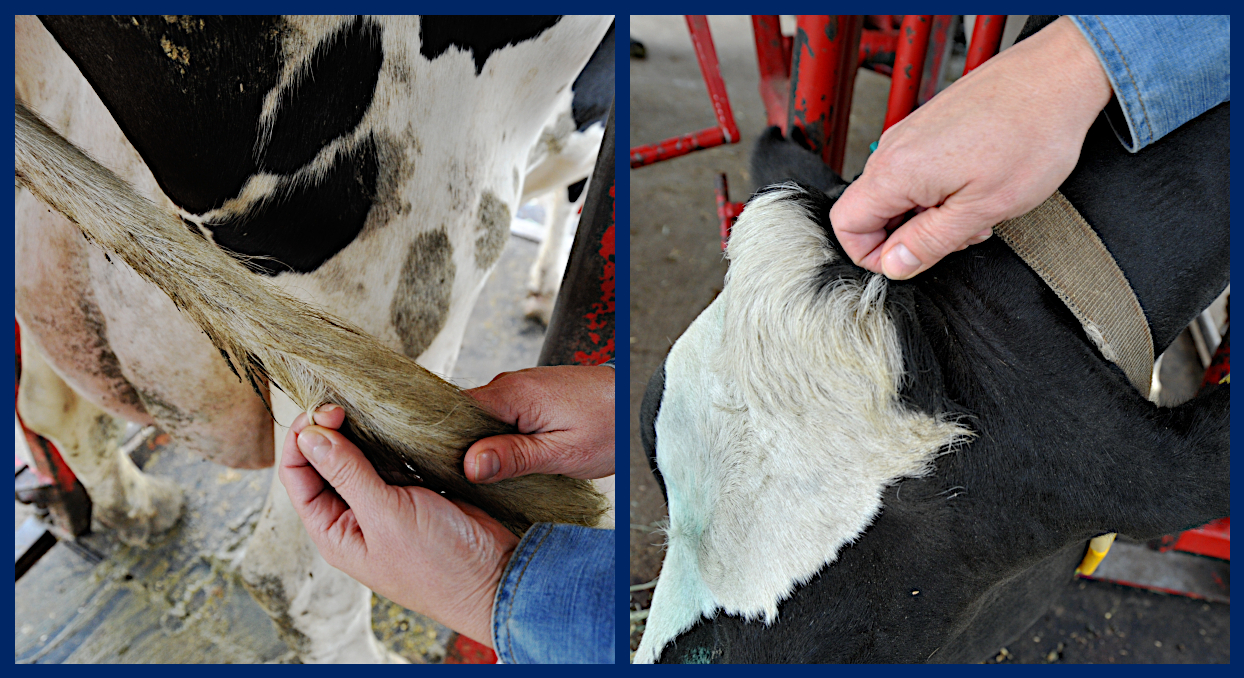Quick Summary
Click here for Price and Turnaround Time
Phenotype: Affected fetuses have severe disproportionate dwarfism, a short vertebral column, a large head, and are naturally aborted around the seventh month of gestation.
Mode of Inheritance: Incomplete dominance
Alleles: N = Normal/Unaffected, BD1 = Bulldog Dwarfism BD1 mutation, BD2 = Bulldog Dwarfism BD2 mutation
Breeds appropriate for testing: Dexter, Dexter crosses, Miniature Jersey, Miniature Zebu, Miniature Scottish Highland
Explanation of Results:
- Cattle with N/N genotype will not have these types of bulldog dwarfism and cannot transmit either of these bulldog dwarfism variants to their offspring.
- Cattle with N/BD1 or N/BD2 genotype will not be affected by these types of bulldog dwarfism, but are carriers. They will transmit the bulldog dwarfism variant they carry to 50% of their offspring. Matings between two carriers result in a 25% chance of producing a calf with bulldog dwarfism.
- Cattle with BD1/BD1, BD2/BD2, or BD1/BD2 genotype will have bulldog dwarfism. Fetuses with any of these genotypes are expected to be naturally aborted around the seventh month of gestation.
$30 one test per animal for Dexter BD1 Bulldog Dwarfism
$80 one test per animal for Dexter BD2 Bulldog Dwarfism (flat fee - not available as part of discount package)
Also available as part of the following packages:
$40 Dexter BD1 Bulldog Dwarfism + one test from list below
$50 Dexter BD1 Bulldog Dwarfism + two tests from list below
$60 Dexter BD1 Bulldog Dwarfism + all tests from list below
Sample Collection
Most of the cattle DNA tests offered by the VGL are carried out using cells from the roots of a hair sample (roughly 20-40 hairs).
Hair samples should be taken from the switch of the tail, the poll, or the neck.

1. Clean (use comb if possible) tail switch, poll, or neck by removing all loose hair and foreign matter.
2. Use fingers or pliers to grasp approximately 8-10 hairs close to the skin and pull. Pull (do NOT cut) hair strands. Examine the end of hair strands for presence of root bulbs. Hair roots are necessary for DNA testing. If the majority of hair strands lack the root bulbs, discard hair and start again.
3. Repeat until you have approximately 20-40 hairs with root follicles attached.
4. Place the 20-40 hairs with root follicles attached in the envelope and seal with the animal’s ID written on the envelope. If hairs are long they can be taped to the submission form. Do not tape the roots.

5. Repeat steps 1-4 for each additional animal being sampled.
Note:
- Hair should be dry.
- If hair has excess dirt and debris, please brush out if possible before pulling hairs for sample.
- Do not cut the hair! The roots contain the DNA for testing.
- When sampling several animals in the same session, make sure that there are no hair strands in your hands to reduce the possibility of sample contamination. Clean hands and/or pliers if possible.
Inheritance of a form of chondrodysplasia known as bulldog dwarfism has been documented in Dexter cattle since the early 1900s. Among other defects, affected fetuses have severe disproportionate dwarfism, a short vertebral column, and a large head, and are naturally aborted around the seventh month of gestation. The defect is a major problem for Dexter breeders, as one copy of the defective allele produces the favored short-legged phenotype of Dexter cattle, a mild form of disproportionate dwarfism. Thus, selection for this short-legged phenotype maintains a lethal allele in high frequency in the population. Breeding heterozygous animals together can produce 25% affected fetuses.
Research by investigators in Australia determined that the bulldog dwarfism in Dexters is caused by two mutations in the aggrecan gene (ACAN). The most common mutation is BD1 (2266_2267ins-GGCA). A second mutation in the same gene – BD2 (–198C>T) – accounts for bulldog dwarfism in one particular bull lineage. Diagnostic testing for BD1 and BD2 helps Dexter breeders avoid production of bulldog calves.
A 2016 publication reported the presence of the BD1 mutation in Miniature Scottish Highland cattle. The report described a stillborn calf delivered by caesarian section that was diagnosed with chondrodystrophic dwarfism and hydrocephalus, characteristics compatible with bulldog malformations. Though the fetus was not genetically tested, both the sire and the dam were found to be heterozygous for the BD1 mutation, indicating that the mutation is not exclusive to Dexter cattle.
The VGL has also detected the BD1 variant in Miniature Zebu and Miniature Jersey cattle.
